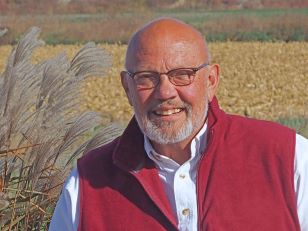
You’ll drive a long way to find a sandy beach on Minnesota’s north shore. That humpy stuff roiling beneath your feet looks and feels like lava, which it is, surprising as that may seem with not a mountain anywhere close. Hardened lava, basalt, is unforgiving and a little chancy to walk on if you’re into your 70s anyway, pretty much unforgiving.
“There’s a cross just up the beach a ways,” some friends of our told us last weekend. We’d rented a cabin on the north shore, a little lovely old thing built in the 1935, right off the rocky beach, the one in the picture above.
“A cross?” I said.
They’d hiked up there the day before. “Some priest who came to minister to Indians,” they said. They’d forgotten his name. They’re our age.
I know enough about missionaries, medicine, and the indigenous to imagine a story out of a stone cross upright in all that basalt, even if I’d never heard this one. Father Pierre-Jean de Smet, a Belgian Jesuit, had blessed untold Lakota with medical help and consolation during a reign of cholera and thereby become greatly beloved among them. Andrew and Effa Vander Wagen, native Hollanders, gained acceptance among the Zuni when, in 1898, their own meager medical provisions created inestimable good will during a smallpox epidemic. Besides, Effa was a nurse. Narcissa and Marcus Whitman had tried valiantly–and tragically–to help people deal with a plague of mumps that killed far too many Cayuse in southeast Washington.
A cross memorializing a Catholic priest and a suffering people was more than enough to get me up the next morning and out of that cabin early.

In 1846, Father Frederic Baraga (yes, there’s a commemorative statue in Grand Rapids, Michigan) was coming across Lake Superior to the north shore. He’d heard the Chippewa (Ojibwe) were suffering–thus, at least, the story goes. Piloted along by his friend Lewis, a Native, Father Baraga, aboard a birch-bark canoe, was on a trek that would have been 200 miles long had they taken land. Extracting history from myth may be a problem here, but it’s not hard to imagine the two of them, waves rising, finally coming to this hard core basalt shore on an exhausting trip during which, people say, Father Baraga literally prayed without ceasing.
Lewis, who did the paddling, looked fearfully at all that rock, but prayerful Father Baraga, confident of Jesus’s love, assured Lewis they’d do just fine and directed him to keep going.
Divine intervention? Judge that as you will, but by luck or Design, Lewis pulled them up to shore at the inlet of a small, placid river, where the landing went blessedly. Today, “Cross River” is so named for the wooden cross they erected to remember what they most certainly considered an answer to prayer.
The birch logs they used were long ago replaced by granite that’s still there, just up the beach from the cabin where I’d slept, well, the night before.
I was alone, but it was clear immediately that I hadn’t been the only visitor. Someone left fall mums at the base, purple as robes of royalty, as if to remember–or not to forget. In fact, two bouquets graced that cross that Saturday morning.

Just a few years ago, a statue of Father DeSmet came down from the place it stood on the campus of St. Louis University. Not long ago, a portrait of Narcissa Whitman, the very first woman to cross the continent on what would become to Oregon Trail, was defaced, black paint sprayed over the portrait gracing some fancy room of the college which still bears their name.
I believe I’ve come to understand such political acts as attempts to retell the Indian mission story with an emphasis on hard-nosed assimilation and the resultant trauma to Native peoples. Christianity got used in the 19th century as a means of conquering a people in a white man’s effort to accomplish something impossibly difficult—to replace a Native soul with a Christian soul in a generation. I think I understand why this stained glass image feels demeaning, somehow wrong.

It’s inescapably true that Father Frederic Baraga was, totally unknown to himself, a white colonizer. I get that. But it’s also true he saved lives, helped people, and covered so much territory in his ministry that he was called, and still is known, “up north,” as “the Snowshoe Priest.”
The Saturday morning I visited the mouth of the Cross River it was clear someone not that long before had left a bouquet of fall mums, nearly radiant as the fall grasses stemming from the basalt but burning fiercely nonetheless in the morning sun.
I’m guessing it’s not the local Ojibwas who keep up the small monument grounds. It’s likely the local government. But someone sometime before had stacked boulders up for a retaining wall against the kind of waves that would have flipped Lewis and Father Baraga that late night right here on the rugged shore and could take out the granite cross that’s been here for generations. So that cross isn’t moving, not for a while at least, and that’s good, in my book.
The man’s faith and heroism were exemplary and Spirited, saintly, even if there’s another far less blessed story here that granite cross doesn’t tell.
We need to know and understand that story too.


